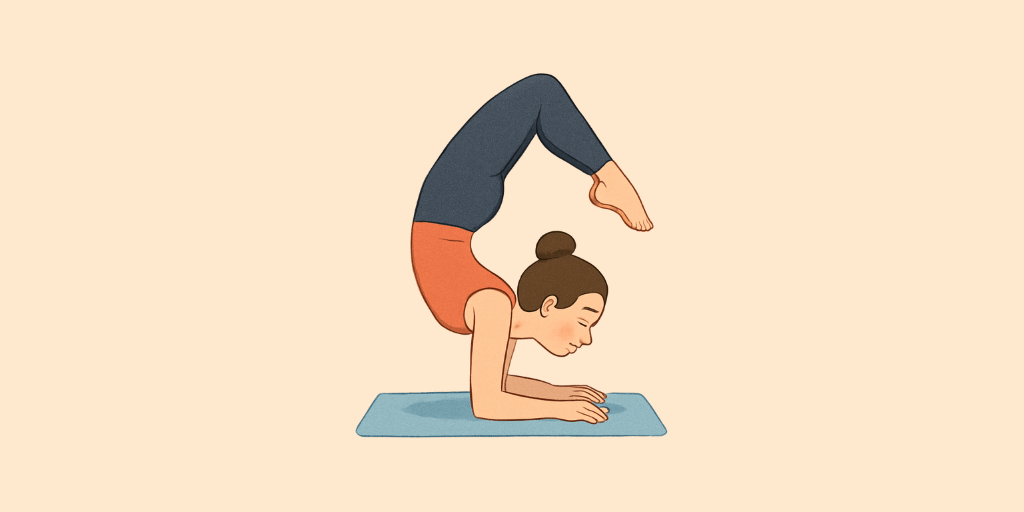Sanskrit Name: वृश्चिकासन
English Name: Scorpion Pose
Description:
Vrischikasana, commonly referred to as Scorpion Pose, is a visually stunning and demanding yoga position. The term originates from the Sanskrit word Vrischika (वृष्चिक), which translates to “scorpion,” and Asana (आसन), meaning “pose” or “seat.” Thus, Vrischikasana signifies “Scorpion Pose,” as the body’s shape in this position mimics the arched back of a scorpion ready to strike. Although Vrischikasana is a relatively modern addition to yoga and is not mentioned in ancient texts like the Yoga Sutras or Hatha Yoga Pradipika, it has become increasingly popular in contemporary yoga, particularly among those engaged in advanced practices. This pose requires a combination of strength, balance, and flexibility, making it a sought-after challenge for seasoned practitioners eager to test their limits. Vrischikasana is not only powerful and striking but also represents overcoming challenges, akin to a scorpion navigating its surroundings with determination.
Benefits:
- Strengthens Core Muscles: Engaging the core during the pose enhances abdominal strength, which supports overall stability and posture.
- Improves Flexibility: The pose stretches the spine, shoulders, and legs, promoting greater flexibility and range of motion in these areas.
- Enhances Balance: Balancing on the forearms helps improve overall balance and coordination, which can be beneficial in daily activities and other physical practices.
- Stimulates the Nervous System: The inverted nature of the pose can stimulate the nervous system, potentially improving mental clarity and focus.
- Promotes Circulation: The inversion encourages blood flow to the brain and upper body, which may enhance circulation and oxygenation of tissues.
- Relieves Stress: Like many yoga practices, Vrischikasana can help reduce stress and anxiety levels by promoting mindfulness and relaxation.
- Strengthens the Arms and Shoulders: The weight-bearing aspect of the pose builds strength in the shoulders and arms, which can be beneficial for overall upper body strength.
- Encourages Emotional Release: The intensity of the pose may facilitate emotional release and self-awareness, contributing to mental well-being.
Medical Conditions(Relief):
- Back Pain: This asana strengthens the spine and improves flexibility, which can alleviate discomfort in the back region.
- Digestive Issues: The pose stimulates the abdominal organs, aiding in digestion and promoting overall gut health.
- Stress and Anxiety: Practicing this pose encourages concentration and mindfulness, helping to reduce stress levels and anxiety.
- Improving Balance and Coordination: By enhancing proprioception, this asana helps improve overall balance and coordination, which can be beneficial for those with stability issues.
- Strengthening the Arms and Shoulders: It builds upper body strength, which is useful for individuals recovering from injuries or those looking to enhance their physical fitness.
Medical Conditions(Avoid):
- Carpal Tunnel Syndrome: The pressure on the wrists may exacerbate symptoms.
- Recent Wrist or Shoulder Injuries: Risk of further injury due to the weight-bearing nature of the pose.
- Pregnancy: The pose can strain the abdominal area and is not recommended for expectant mothers.
- Severe Back Issues: Conditions like herniated discs or severe lower back pain may worsen with this pose.
- High Blood Pressure: The inversion can increase blood pressure levels, posing health risks.
- Epilepsy: The pose’s inversion may trigger seizures in susceptible individuals.
- Glaucoma: The pressure on the head can worsen eye conditions.

